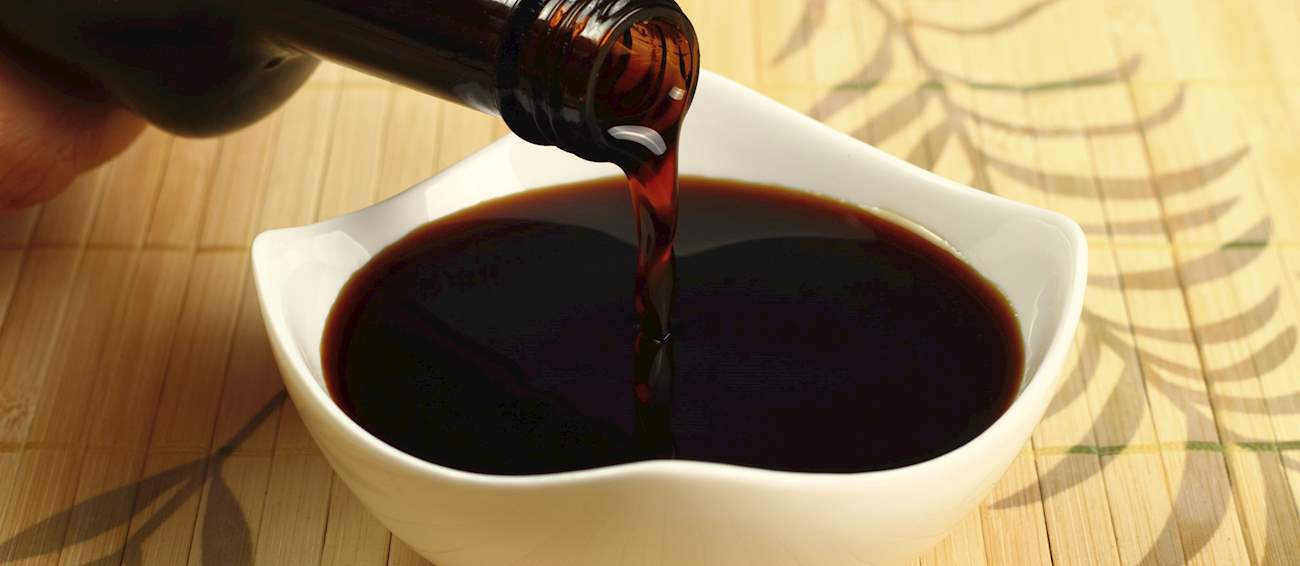Soy sauce (Jiang you)
(Soy sauce, Shoyu, Ganjang, Kicap, Kecap, Toyo, 酱油, 豆油, 豉油, ပဲငံပြာရည်, ซีอิ๊ว, 간장, 醤油, ເຕົ້າຈ້ຽວ, ស៊ីអ៊ីវ)
Used in China for more than 2,500 years, soy sauce is one of the world's oldest condiments, made by fermenting a combination of salt, enzymes, and mashed soybeans. It originates from ancient China between the 3rd and 5th century, when preserved foods were commonly known as jiang, a predecessor to what we know today as soy sauce.
Since jiang made from soybeans and wheat was the most accessible, it developed quite rapidly, spreading from China to Japan and other neighbouring regions and countries. Before today's mass production, the preparation of soy sauce was a laborious process, resulting in a brew with a delicately meaty, earthy flavor.
The producers who still ferment the ingredients in an old-fashioned way claim it takes from six months to a year (or even longer) to produce this delicious condiment, giving it umami, the so-called fifth flavor. As a rule of thumb, the darker the soy sauce, the more desirable it is.
Soy sauce is a condiment that can be used on its own, or as a base for a seemingly infinite variety of sauces, stir-fries, meat, and fish dishes.
Types of Soy sauce (Jiang you)
Part of
Gobi manchurian
Gobi manchurian is a traditional Indo-Chinese dish consisting of fried cauliflower (gobi) that’s tossed in a sweet and spicy sauce (manchurian). There are two versions ... Read more
Suanla bocai
Suanla bocai is a traditional dish originating from Sichuan. It's usually made with a combination of spinach, Zhenjiang vinegar, soy sauce, chicken stock, sugar, and chili ... Read more
Dan gun
An egg roll is a Chinese-style snack consisting of diced meat and chopped vegetables that are wrapped in an egg-based dough, and then deep-fried in hot oil. Although Andrew ... Read more
Liang ban qie zi
Liang ban qie zi is a traditional dish originating from Shanghai. The dish is usually made with a combination of eggplants, scallions, garlic, ginger, soy sauce, oil, ... Read more
Serve with
Maki
Makizushi, meaning rolled sushi, is probably the most famous sushi variety. Invented in the 18th century, this type of sushi consists of nori, a sheet ... Read more
Karaage
Also known as dry-frying, karaage is a Japanese cooking technique in which various foods are first lightly coated in arrowroot starch, then deep-fried. The use ... Read more
Jiaozi
These Chinese dumplings known as jiaozi, consisting of a thinly rolled piece of dough which contains either meat or a vegetable filling, are&... Read more
Yakiniku
Yakiniku is a term denoting a Japanese technique (with Korean origins) of cooking bite-sized pieces of meat and vegetables on a table grill. It can also refer ... Read more
Best Soy sauce (Jiang you)













